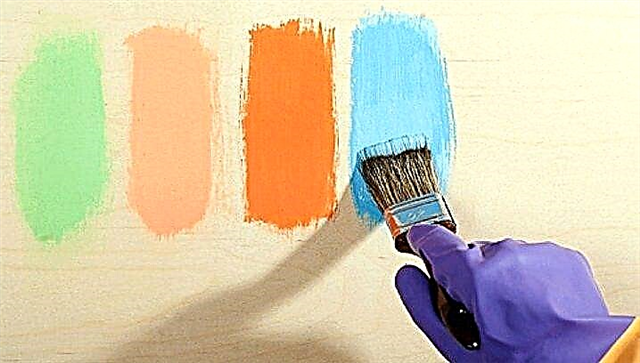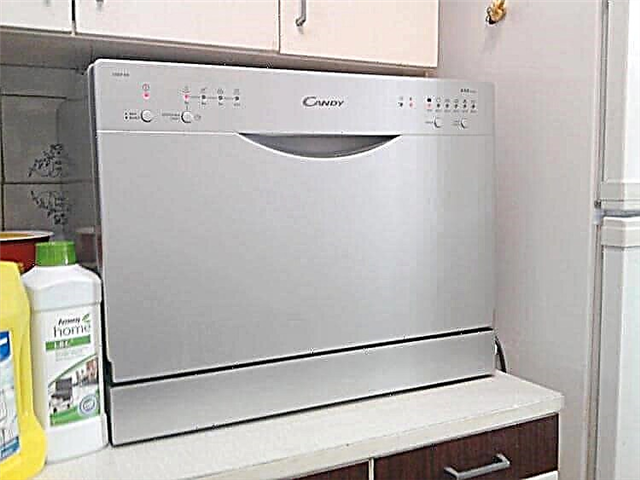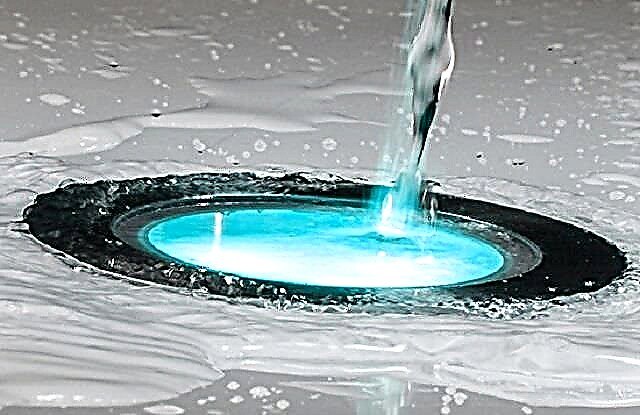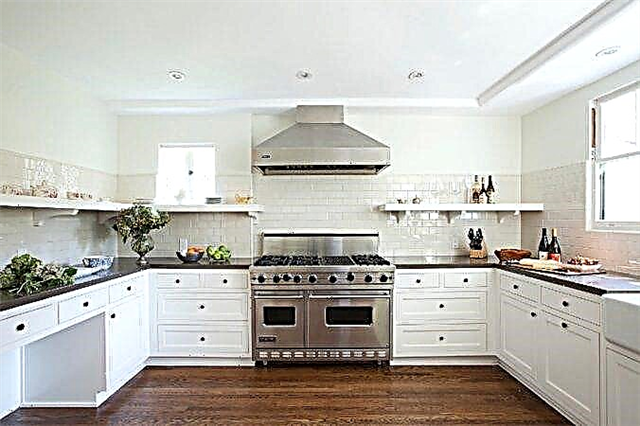The combination of different finishing materials in the interior of one room is a feature of modern designers. Therefore, water-based paint is no less popular than in the old days, when it was completely painted with walls and ceiling. This material is durable and non-toxic, it is easy to apply, no cracks form on it, and all these positive qualities are supported by an attractive price.
Using this dye is easy, however, before starting work, make sure that the fluid has a suitable consistency. If it is too thick, then you will have to think about how to dilute the water-based paint for your specific needs.
Water-based paint and its types
So, for starters, it's worth figuring out what a water based paint is? This is a water-based paintwork material. Most often it is used for interior decoration-painting of walls and ceilings, but some of its varieties are suitable for outdoor work.
Water-based paints come in several forms:
- polyvinyl acetate: their base is PVA glue, and the main advantage is affordable price,
- silicate: they are a solution of water glass and do not differ in good moisture resistance,
- silicone: designed for outdoor use, made on the basis of resins and have high strength and durability,
- acrylic: wear-resistant and expensive, resin is also the basis for their production,
- latex: they do not fade and are not afraid of water, so they can be washed without fear.
All these varieties of paints and varnishes, if necessary, are diluted with water, and this is their definite convenience.

How and when should paint be diluted?
Usually, it is not necessary to dilute a water-based emulsion paint from a freshly opened can with an expired shelf life, since its consistency is usually suitable for application to the surface. Such a need may arise if you decide to use a spray gun or use thickened residues from an old can from a previous repair. In this case, you can’t do without dilution, because if the container is open, the paint and varnish material in it dries and thickens over time.
In order to return the desired consistency to the paintwork material, let's figure out how to do it right.
When breeding, it is enough to observe the following rules:
- the amount of added water should be no more than 1/10 of the volume of thickened paint,
- dilute the finishing material gradually, achieving the necessary density with a construction mixer or a drill with a mixer nozzle,
- Having obtained the desired consistency, do not immediately start applying the material to the surface - the foam formed after whipping should completely settle to the bottom,
- whether the paint is correctly diluted can be checked by dipping a brush in it and drawing it over the surface - if the resulting solution is applied evenly, no smears can be seen, it does not drain and does not roll, then everything is done correctly.
Tips & Tricks
- The volume is always indicated on the packaging with paints and varnishes, but if you need to dilute the residues, then determining the amount by eye is risky. To accurately calculate how much paint is left, just pour it into another container using a measuring cup or a liter can.
- The temperature of the water used for dilution should be between 18-30 degrees. It is not recommended to use ice or hot water for dilution, as this will negatively affect the uniformity of the material.
- It is better to use purified bottled water as a diluent. In addition, it does not need so much, so you can be a little generous. Impurities present in the composition of industrial water, not the best way can affect the characteristics of water-based paints.
By following these simple rules, you can save a lot on buying new materials and at the same time free the storeroom from the stale material leftovers.
How to tint the paint?
Sometimes the paint is also bred with color. If you plan to make the room bright, and only white paint, purchased earlier for painting the ceiling, is available, then you should not spend money on a new can - just buy the necessary color pigment.
To achieve the desired color you will need:
- a jar of color of the desired color,
- large clean capacity
- mixer,
- water at room temperature.
The existing white emulsion paint is poured into a thoroughly washed and wiped dry bucket. Then a pigment is gradually added to it, after which the solution is mixed with a mixer.
In no case is it immediately necessary to pour the entire jar of color in the finishing material, since despite the fact that there is not much of it, the color can turn out to be very bright. As a result, it will become clear whether it is necessary to dilute the mixture additionally with water. This is necessary in several cases: if the paint is too thick, it drains heavily from the brush and is taken in lumps when applied to the surface and if you need a certain consistency for the spray gun.
In order not to overdo it with the pigment and as close as possible to the desired shade, it is better to first mix a small amount of white water emulsion with color in a separate bowl, and only then give the rest of the color.
Adding a decoration item
Kohler is also not the last thing that can be added to a white water emulsion. You can give the room a fabulous atmosphere by mixing a decorative element into the water-based paint. Such an additive can be purchased both in the market and in the construction supermarket. It can be sparkles or mother of pearl effect.
When it is planned to make the surface bright and saturated, decorative paint is applied over a water-based paint. In this case, do not forget that each subsequent layer can be painted on top of the previous one, after an hour - the interval must be observed so that the material has time to set.
For lovers of more muffled and calm tones, a logical question arises: is it possible to make the room unusual, but not to make the walls too bright? Yes, you can do this by simply adding a decorating element to the color with paint. The mixing procedure is no different from the previous one: sparkles are added to the pre-tinted mixture, and then all this is thoroughly mixed with a mixer and, if necessary, diluted with water.
When to dilute
A composition of which water is a component is called an aqueous emulsion. If you apply the solution to the surface, you can see that almost all of the liquid evaporates quickly. The material gets its properties thanks to special fillers that create a painted surface.

The protective layer can be obtained after a short period of time, after complete drying. The duration of this process also depends on the material on which it is applied.
Modern building stores offer a wide range of water-based paints. When choosing, it is better to focus on brands of well-known manufacturers who value their name and ensure the quality of their products.


Thick paint
If you opened the jar, and inside you saw a thickened composition or it is heavily mixed. In these cases, solvents must be used. But you should not overdo it, because then the composition will begin to drain, forming smudges. The protective layer will become thinner and will not have resistance; performance will decrease sharply.


Hard to apply
Excessive density can also be determined by a significant amount of the mixture that remains on the surface when stained. There are basically two methods for applying paint.
The first option is to use all kinds of brushes or construction rollers. In this case, the structure of the mixture should be sufficiently viscous. This will make it easier to manually process the ceiling or wall covering. The composition will not drain and will lay down in a uniform layer. If the paint is too liquid, then it will be extremely difficult to apply.


The second option is spray guns or spray guns, which are manual or electric. Using such devices, you can work even on very large areas. Also, they greatly facilitate the whole process and the paint lays perfectly evenly. A feature of the tool is spraying the composition through a special nozzle under high pressure. That is why for devices it is necessary to apply a liquid consistency. Dosage depends on the selected instrument model.


Storage Expiration
It will be necessary to dilute the composition if the terms or storage conditions have been violated. This can happen if you opened the can and then closed it badly. After a while, all the dried material will be unsuitable for use. But sometimes it can be restored. To do this, use special solvents, which we will talk about below. You can also dissolve the paint using PVA glue. But this is quite an expensive way.
Sometimes after opening the cans, it is found that the composition is very liquid. In this case, you can let it stand a little open, without a lid, so that the excess liquid evaporates.
A way out of this situation is the addition of a special hardener.


When it is necessary to dilute aqueous emulsion formulations
Water emulsion is a composition based on water. In it in the form of small droplets are various fillers that give the material final properties. As the solution is applied to the surface, part of the liquid is absorbed, and part evaporates. Due to the rapid removal of moisture, a protective layer is formed after a short period of time. Final drying depends on the surface material.
 Scheme depicting the process of water evaporation, followed by the formation of strong bonds when applying water-based paint to the surface
Scheme depicting the process of water evaporation, followed by the formation of strong bonds when applying water-based paint to the surface
Now on sale there are various options for water emulsion (water-dispersed) paint. Many manufacturers produce products under their own brands. Therefore, it is advisable to breed the mixture, taking into account the individual characteristics of each variety in the following cases:
- If after opening it is found that the solution is too thick, then it must be diluted. To determine that the consistency is not suitable for application is quite simple: for this, the composition is mixed well. If a large amount of product remains on the stirring item that does not flow back, then the use of a solvent is necessary.
 When diluting the paint, it is important not to overdo it, since the film thickness decreases when diluting the composition, which means that the performance of the coating decreases
When diluting the paint, it is important not to overdo it, since the film thickness decreases when diluting the composition, which means that the performance of the coating decreases - If the tools used are difficult to apply a thickened composition. The process is carried out manually and mechanically:
- For the first option, brushes and rollers are used. Manual processing of walls and ceilings requires that the structure of the mixture be more viscous. Then the uniformity of the layer and the absence of sagging, which arise due to the fact that the paint is too liquid, are ensured.
- The second method is to use a spray gun. Such a device greatly facilitates the process and allows you to perform work on large areas. The feature of the tool is that the coloring solution under pressure passes through the nozzle, due to which the suspension lies more evenly on the base. Therefore, to use a spray gun for water-based paint, the consistency of the composition must be liquid. Compared with the previous version, the viscosity decreases by 1.5–2 times. The exact proportions depend on the model of the instrument and the type of paint.
 Currently, specialized electric spray guns for water-based paints, both electric and manual, are on the market
Currently, specialized electric spray guns for water-based paints, both electric and manual, are on the market - In case of violation of the conditions of storage and use of products. It happens that the container after opening loosely clogged. If the situation is not corrected in time, then the material will completely become worthless. But at a certain stage, when the mixture has not yet had time to dry, it can be restored.
On a note! If the composition is liquid, this can be fixed in two ways: let the water evaporate a little or add a hardener. The second method is more complex, it is used in cases where the paint initially does not have the desired consistency.
Application of water for paint dilution
The right choice of diluent is the key to success. There are many tips and tricks for using various substances for this process. But the only right decision will be the use of water, since it is it that is the basis of the product.
For the best dilution, the fluid should advise certain parameters:
- Temperature. Water should have room temperature. If the work is carried out outside, then a component is added to the facade mortar, slightly exceeding the ambient temperature.
 When deciding how much solvent to add to the paint, it is important to consider that at low temperature the composition tends to thicken, and in the heat it becomes more liquid
When deciding how much solvent to add to the paint, it is important to consider that at low temperature the composition tends to thicken, and in the heat it becomes more liquid
 Distilled water can be found in almost any construction or car shop, less commonly found in pharmacies
Distilled water can be found in almost any construction or car shop, less commonly found in pharmaciesAttention! There is advice that dilution can be carried out using solvents used for enamel or oil paint. It is not right. If such a substance is added to an aqueous emulsion, then often the mixture simply collapses. In this case, the reaction may not occur immediately, which is misleading.
Proportions
The biggest problems (especially for those who do all the work on their own and without experience) arise due to proportions. The fact is that there is no clear correlation, you should be guided by the parameters that each specific manufacturer indicates on the label.
General recommendations are as follows:
- Up to 10% liquid can be used for dilution. In this case, the exact parameters depend on the surface material and brand of the paint.
 On the label, the manufacturer always indicates the permissible percentage of diluent to the total volume of paint
On the label, the manufacturer always indicates the permissible percentage of diluent to the total volume of paint
On a note! Excessive dilution is practiced by unscrupulous masters. This makes it easier to lay each layer, reducing the decorative effect. In addition, if the purchase is not carried out by the landlord, this makes it possible to increase estimates.
How to breed paint?
To dilute selected material with water, there is no need to use sophisticated equipment. To work, you need a simple set of devices:
- net capacity of suitable size
- drill with mixer nozzle,
- small spatula (if lumps need to be removed).
- Paint is poured into a container. The process is carried out carefully, the composition is mixed a little.
- Water is added gradually. Even taking into account the proportions specified by the manufacturer, it is better to constantly check the viscosity.
- After adding each portion, everything is thoroughly kneaded. If lumps are visible, then uniformity has not yet been achieved.
It should be borne in mind that the color is affected by the volume, so it is added diluted in liquid.
What is a water emulsion?
Before deciding how to dilute the water-based paint for walls, you should study its composition. After all, the type of solvent depends on it.
Water emulsion solutions are solutions in which the smallest particles of polymers are evenly distributed in a liquid. In the process of coloring after evaporation of moisture, they remain on the surface, forming an even layer of white. Such formulations are called dispersed emulsions. They can be used for walls and ceilings of any type from concrete to wood.
If special solvents capable of entering into a chemical bond are used to dilute oil paints and enamels, this is not required for aqueous emulsions. The smallest particles of polymers are easily distributed in any liquid medium. Therefore, any kind of water-dispersed solutions can be diluted with water.
Types of water-based paint
First, we will understand what types of dispersed compositions exist. After all, their properties directly depend on the type of binder. They can be made on the basis of:
- cement and lime: rather strong, but not too decorative, it is impossible to get a perfectly smooth surface with their help, they are used mainly for coating concrete, brick in utility rooms, painting facades,
- potassium liquid glass: compositions based on it, called silicate, give a strong heat- and water-resistant film, however, it is difficult to work with such compositions because of the low plasticity, as the glass particles are also suspended, that is, evenly distributed in the liquid, dilute such an aqueous emulsion paint, if it is thick, is perfectly acceptable
- PVA: the introduction of glue based on polyvinyl acetate allows you to get a durable decorative, but not too moisture resistant coating, therefore, the compositions are recommended to be used only in dry rooms,
- polyacrylate (acrylic): a soft elastic polymer that forms a thin elastic film on the surface, the paint has good hiding power, lays evenly, walls and ceilings covered with it can be wiped with a damp cloth, such an emulsion of water can also be diluted with water,
- latex: artificial rubber, which is in solution in the form of a suspension, similar in properties to vinyl, gives the compositions increased water resistance and wear resistance,
- silicone resin, which has good water-repellent and high decorative properties, compositions with its addition can be used even outdoors, the only drawback is the price, it costs a lot.
Since all of the above types of emulsion are dispersed, that is, the binder in them is distributed in the liquid in the form of a suspension, they can be diluted with ordinary water. But it is worth diluting the water-based paint if it is thick.

How to apply water
The easiest way to achieve the desired consistency of water-based paint is dilute it with water, as it is taken as a basis.
To obtain a composition that covers the surface well, it is necessary to use water of the following parameters:
- When work is carried out indoors, the liquid should be at room temperature. For outdoor use, the water temperature should be slightly higher than the ambient temperature.
- Water should not contain impurities. It is an excellent solvent; it may contain substances that the human eye will not notice. When adding untreated tap water, the coloring solution may slightly change color or change its properties for the worse. It is better to use distilled water. It can be bought at construction or automotive stores. If it is not possible to stock up with purified water, it is necessary to bring tap water to a boil, allow it to cool and settle.
Main proportions
Before you start painting, you must examine the label. Manufacturers clearly prescribe all the parameters of the material, leave recommendations about the scope of the product, methods of storage and dilution.
For beginners, the difficulty may lie in the fact that there is no clear rule governing the need to add water to the paint material. In each case, the composition is evaluated after opening the package.
Sometimes it may turn out that there is no need to dilute the material, especially if the manual method of painting is chosen.
Professionals advise applying the material to a small area, assessing its condition and only after that proceed with dilution, relying on the following proportions:
- the added liquid should not occupy more than 10% of the volume of the paintwork material,
- the percentage of added water is affected by the coloring technology: for the primer layer, from 5 to 8% of the liquid is added, for the second - up to 3% of the water, the finish layer does not require dilution.
Useful Tips
Before buying a water-based paint, you need to pay attention to the shelf life. If it comes to an end, it is better to choose a jar of later production. Then, if unspent material remains after painting, it can be stored in accordance with the manufacturer's recommendations.
Do not pour the material left after painting back into the general can, this may affect its properties. It is better to use a clean plastic or glass container with a tight-fitting lid.
 When buying, pay for the shelf life.
When buying, pay for the shelf life.
If the hiring worker performs painting work, it is necessary to follow the process of paint dilution.
Some unscrupulous masters dilute the paint too much, which makes it easier for them to apply each layer, but the decorative component suffers.
The method of diluting an aqueous emulsion ink with solvents for oil paint or enamel will be erroneous. When such a solvent is added, the reaction does not occur instantly, however, over time, the coating will curl.
How to spread paint
For breeding, a set of tools is used that is available to everyone:
- a clean container for diluting the solution (a special paint tray, an old bucket or a container from already used building materials),
- drill with mixer nozzle.
Correct dilution occurs according to the following algorithm:
- It is necessary to transfer the paint into containers, mixing in the process.
- Estimate the volume of material in the container, prepare the water. It is added gradually, after each addition, the solution is stirred with a drill, then its viscosity is determined.
- If lumps are visible in the solution - homogeneity is not achieved, continue stirring.
When the paint has reached optimum viscosity, you need to check it on a small area of the surface. If the composition is suitable in all respects, it lies evenly, does not leave sagging, you can start staining.



